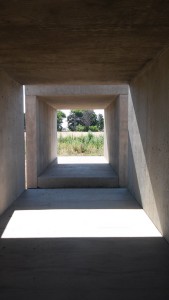I see a lot of new and not-so-new scores, and the question of editing has been coming up a lot lately. This fall, I’m teaching a seminar on performance practice and notation of new music, running the UNT new music ensemble Nova, and coaching pieces for the upcoming International Computer Music Conference; I can testify that the care taken in editing the scores my students and I are looking at varies astonishingly. My students and I are enjoying many opportunities to solve notation/realization riddles, some of them more necessary than others. Yesterday, two students and I spent a full fifty minutes working through misprints and instrumental problems, without even starting to “rehearse” – this on a piece that (problems aside) should be easily sight-readable.
An important function of notation is to communicate to the performer. Efficiency – compositional and performative – is paramount. Performers appreciate notation that translates rapidly to physical/technical/musical action. Notation preferences are highly personal (you’ll see some of mine below), but I wanted to come up with an easy and universal checklist which might help. Thus, at 5 am this morning, I contemplated Top Ten Ways to Improve Notation, which I present here.
1. Proof-read (again and again)
Imagine trying to read a book to someone that is filled with garbled words, typos, and markings that look like letters or words (but aren’t). It would be difficult to convey a convincing reading of the text when constantly distracted by irrelevant symbols. Everyone makes an occasional mistake – that is ok! However, failing to proof-read is justifiably annoying, and can seriously undermine the performer’s efforts.
2. Inventing new symbols when standard ones will do
Why does your performer need to learn your special trill notation, for a ordinary trill? While I generally appreciate unusual notations, I dislike special symbols which connote a return to normalcy – use ord. or norm. instead.
3. Consult orchestra and instrumentation books
A baritone saxophone will never glissando like an electric guitar. A piccolo will never play a fortissimo low Db. Check the books. Earn your performers’ trust, and don’t waste their time.
4. If you create new symbols, make sure they are evocative
Look up other similar techniques in other pieces. Really esoteric symbols should be saved for rare cases. Some of my favorites: ravens as vibrato indications, and sushi and tapas as section dividers. These are memorable and fun. Vertical and horizontal boxes, not so much.
5. Create good instructions, and don’t ignore the obvious (to you)
Do accidentals carry? Trills to semitone? Is it transposed? Are all the symbols explained? Have you included explanations for symbols from another score by mistake? Give your performer the information they need, but omit the extraneous (see #7).
6. Re-read your score as if the first time
Question everything. Why so many double bars? What is “key breath noise”? What does “with air” mean for a flutist (i.e., is everything else key percussion)? Why do accented sixteenth notes have empty noteheads? Is a natural sign on every single note necessary? Why is the clarinet part on two staves? Will my performer enjoy a five minute fourth finger trill, or is this a recipe for a performance injury?
7. Remove something (or some things)
Think of Coco Chanel’s advice about choosing fashion accessories – look in the mirror and take one thing off. Similarly, remove whatever doesn’t serve the score. Don’t care about pitches? Take them out! Rhythm doesn’t matter, but speed does? Use featherbeams or grace notes. Want a multiphonic but don’t care about specific pitches? Make a block so the performer can choose.
8. Easy fixes
Dynamics not aligned with the note. Parts not aligned to each other. Combine rests for readability. Double check accidentals. Choose a readable size for the score.
9. Simple gifts
Rehearsal letters. Measure numbers. Page numbers (for the piece, not the movement). Page turns that work. Fingerings that work. Cues. References to instrumental treatises. Anything a composer can do to streamline the practice and rehearsal process is greatly appreciated by the player.
10. for whom are you writing?
Unless money is changing hands, good notation is the best way to earn a performer’s interest. As a composer friend of mine says, “Notation selects its performers” – musicians who choose Rorem will generally pass up Finnissy, and Feldman fans seldom choose Liebermann. It’s not just the content; we generally know if we’re seeing music of possible interest after scanning a few pages. What performers will sloppy and confusing notation select?




